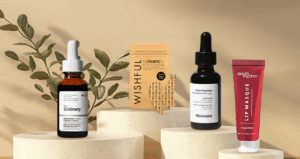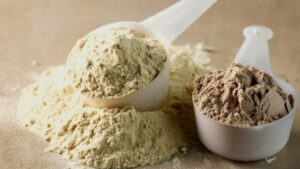Forearm and grip training places unique demands on small muscle groups, tendons, and connective tissues that require thoughtful recovery strategies. Unlike larger muscle groups that signal fatigue through obvious soreness, forearm overtraining often manifests as chronic tightness, reduced grip strength, or nagging elbow discomfort. Understanding how to balance intense training with adequate recovery ensures consistent progress whilst avoiding the frustrating setbacks that plague many athletes.
Why Forearm Recovery Deserves Special Attention
The forearms present recovery challenges distinct from other muscle groups. These muscles and their associated tendons perform constant daily activities—typing, driving, cooking, and countless other tasks—meaning they never truly rest. This continuous low-level activation, combined with dedicated training sessions, creates cumulative stress that demands proactive recovery management.
Forearm muscles contain high proportions of slow-twitch fibres designed for endurance rather than explosive power. Whilst this composition allows frequent training, it also means these muscles can accumulate fatigue gradually without obvious warning signs. By the time discomfort becomes apparent, you’ve likely been overtraining for weeks.
Tendon health represents another critical consideration. Tendons adapt more slowly than muscle tissue, requiring extended periods to strengthen in response to training stress. Rushing progression before tendons have adequately adapted invites chronic conditions like tendinitis that can sideline training for months.
Active Recovery Techniques
Light Movement and Blood Flow
Contrary to intuition, complete rest isn’t always optimal for forearm recovery. Light movement promotes blood flow that delivers nutrients whilst removing metabolic waste products. Gentle wrist circles, finger flexion and extension without resistance, and light stretching encourage recovery without adding training stress.
Performing brief recovery sessions on rest days—perhaps 5-10 minutes of light movement—often accelerates recovery compared to complete inactivity. The key lies in keeping intensity genuinely light, well below levels that create additional fatigue.
Contrast Therapy
Alternating between warm and cold water immersion promotes circulation and reduces inflammation. Submerge your forearms in warm water for 3-4 minutes, then cold water for 1 minute, repeating this cycle 3-4 times. The temperature differential creates a pumping effect that flushes the tissue whilst reducing inflammatory markers.
This technique proves particularly valuable after intense training sessions or when experiencing mild forearm discomfort. However, severe pain indicates more serious issues requiring rest and potentially professional evaluation rather than self-treatment.
Massage and Soft Tissue Work
Self-massage using your opposite hand, massage balls, or foam rolling addresses muscular tension and promotes tissue quality. Focus on both flexor and extensor muscle groups, working slowly through tender areas without forcing pain. Massage improves tissue extensibility and identifies problematic areas before they develop into injuries.
Professional massage therapy provides deeper work than self-treatment, particularly valuable for athletes training intensely or those experiencing persistent tightness despite self-care efforts.
Passive Recovery Strategies
Sleep and Nutrition
Quality sleep remains the foundation of all recovery. During deep sleep, growth hormone secretion peaks, facilitating tissue repair and adaptation. Prioritizing 7-9 hours of quality sleep nightly isn’t optional for athletes serious about maximizing training adaptations.
Adequate protein intake supports tissue repair, with most athletes benefiting from 1.6-2.2 grams per kilogram of body weight daily. Hydration also impacts recovery—even mild dehydration impairs performance and slows recovery processes. Anti-inflammatory foods like fatty fish, berries, and leafy greens support recovery at the cellular level.
Strategic Rest Days
Complete rest days allow physiological systems to recover and adapt. Whilst forearm muscles tolerate frequent training, programming at least one full rest day weekly prevents cumulative fatigue. During intense training blocks, consider scheduling deload weeks every 4-6 weeks where training volume drops by 40-50% whilst maintaining intensity.
These strategic recovery periods feel counterintuitive—you’re capable of training, so why back off? However, deliberate recovery periods allow tendons and connective tissues to catch up with muscular adaptations, reducing injury risk whilst maintaining long-term progress.
Equipment Considerations for Recovery
Adjustable Resistance Tools
Training with appropriate resistance levels prevents excessive stress that compromises recovery. Quality forearm exercise equipment with adjustable resistance allows precise intensity control, enabling you to match training stress to current recovery status rather than forcing prescribed workouts regardless of readiness.
On days when forearms feel fatigued, reducing resistance whilst maintaining movement quality continues building neural patterns without adding recovery debt. This flexibility prevents the all-or-nothing approach that leads many athletes to overtrain.
Recovery-Focused Tools
Specialized recovery implements like massage balls, vibration therapy devices, and compression sleeves support active recovery efforts. Whilst not replacing fundamental recovery strategies like sleep and nutrition, these tools provide targeted relief and enhanced circulation that accelerates the recovery process.
Recognizing Overtraining Warning Signs
Performance Indicators
Declining performance despite consistent effort signals inadequate recovery. If grip strength measurements decrease, gripper closures become difficult that were previously manageable, or training volumes you’ve sustained comfortably suddenly feel exhausting, you’re likely overtrained.
Track basic performance metrics like gripper ratings closed, hold times, or repetitions performed. Consistent progress or maintenance indicates adequate recovery, whilst declining numbers warrant reduced training volume or additional rest days.
Physical Symptoms
Persistent forearm tightness, difficulty achieving full finger extension or flexion, elbow discomfort radiating into the forearm, or reduced hand dexterity all suggest overtraining. These symptoms shouldn’t be ignored or trained through—they indicate your body requires reduced stress and enhanced recovery.
Morning stiffness lasting more than a few minutes, difficulty gripping objects in daily activities, or pain during non-training activities all warrant immediate training modification. Continuing to push through these symptoms invites chronic injuries requiring extended rehabilitation.
FAQ: Forearm Training Recovery
How do I know if I’m overtraining my forearms?
Warning signs include declining performance despite consistent effort, persistent tightness or soreness lasting days, difficulty with daily gripping tasks, elbow discomfort, or reduced range of motion. If recovery feels incomplete between sessions or performance plateaus despite adequate programming, overtraining is likely.
Should I train through forearm soreness?
Mild muscle soreness doesn’t necessarily warrant rest—distinction matters between muscular soreness and tendon or joint pain. Muscular soreness typically improves with light warm-up and doesn’t worsen during training. Sharp pain, pain that worsens during activity, or persistent discomfort indicates you should rest rather than train through it.
How long should I rest if I’ve overtrained my forearms?
Mild overtraining often resolves with 5-7 days of complete rest from grip-intensive training, though light daily activities remain fine. More severe cases may require 2-4 weeks off dedicated grip work. Resume training gradually at reduced intensity, ensuring symptoms have completely resolved before returning to previous training volumes.
Can I speed up forearm recovery?
Quality sleep, adequate protein intake, proper hydration, active recovery techniques, massage, and contrast therapy all support faster recovery. However, recovery fundamentally requires time—tissues repair on biological timescales that can’t be dramatically accelerated. Focus on optimizing recovery factors within your control whilst respecting necessary timeframes.
What’s the ideal training frequency for forearm work?
Most athletes progress well with 3-4 weekly forearm training sessions, though individual recovery capacity varies. Beginners often benefit from 2-3 sessions whilst adaptation occurs. Monitor performance and subjective recovery—if you’re progressing consistently without persistent fatigue, frequency is appropriate. Declining performance or incomplete recovery indicates excessive frequency.
Conclusion
Effective recovery strategies separate athletes who progress consistently from those plagued by chronic setbacks and nagging injuries. By implementing active recovery techniques, prioritizing fundamental recovery factors like sleep and nutrition, using appropriate training tools, recognizing overtraining symptoms early, and adjusting training based on recovery status, you’ll maximize forearm and grip development whilst maintaining long-term joint health. Recovery isn’t weakness or laziness—it’s the intelligent application of stress and adaptation principles that transforms training stimulus into actual performance improvements.






